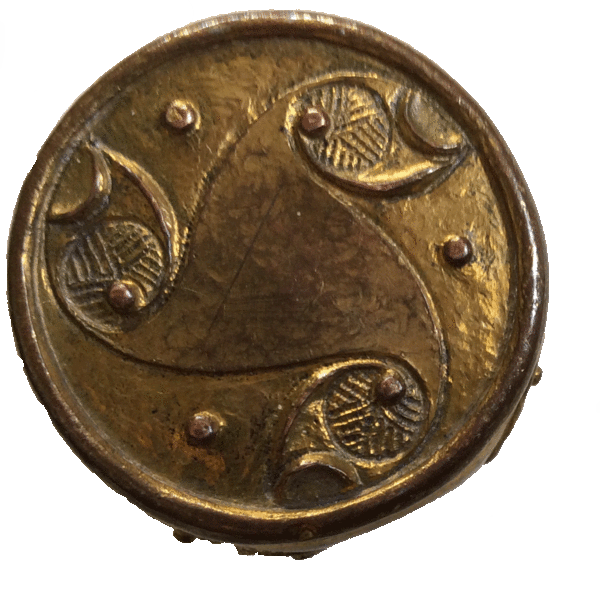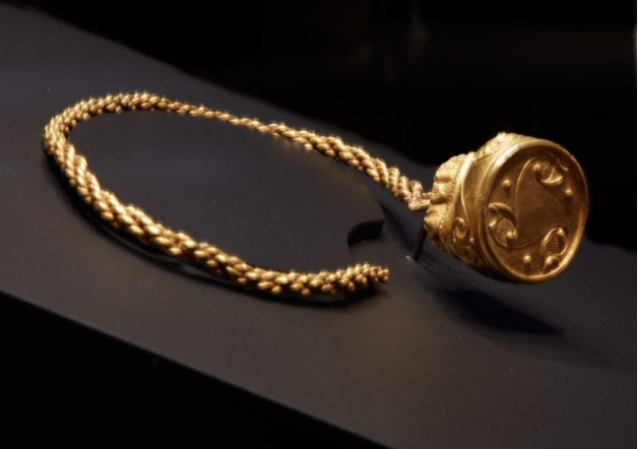As its name suggests the torc was found in Clevedon, about eleven miles north of Weston-super-Mare, and is an important piece of gold Iron Age jewellery, dating from between 150 BC - 50 BC.
It was unearthed near Walton Castle, which was built on the site of an Iron Age hill fort. No records exist as to who found the torc, nor the exact date and location of the find. All that is known is that it was discovered sometime before 1897.
The torc was due to be melted down by Parson & Son of Bristol, a firm of metal smiths. It was saved by Sir Augustus Wollaston Franks, a leading collector of ancient objects, and antiquities, during the later 1800s. Franks bought the torc for his own collection, and later presented it to the British Museum.
The torc consists of a hollow terminal and part of a neck-ring made from twisted strands of gold wire. The terminal is made from gold alloy, a blend of gold and at least one more metal such as silver or copper. The flat-ended terminal is of a type known as a"buffer". It is decorated on the face and sides with a pattern of scrolls and stylised leaves. The base has lines of finely punched dots running around it. The terminal would probably have been soldered onto the neck-ring.
The terminal is approximately 3.5 cm across, and approximately 3 cm high. The thickness of the gold alloy varies between approximately I and 2 cm. The neck-ring fragment is approximately 13 cm long.
Sir Augustus Wollaston Franks
1826 - 1897)
Franks was born in Geneva, and spent his early years in Switzerland and Italy. He returned to England to be educated at Eton College and then Cambridge University. Franks joined the British Museum's Department of Antiquities in 1851, where he worked for 45 years. He added many fine items to museum collections, as well as publishing catalogues, guides and academic papers.
Franks has been described as "arguably the most important collector in the history of the British Museum, and one of the greatest collectors of his age". He was knighted in 1894.
He retired from the British Museum in 1896, and died in 1897. He was a wealthy man, and built up a huge collection of antiquities, most of which were donated to the British Museum, either during his lifetime or after his death - including the Clevedon Torc.

